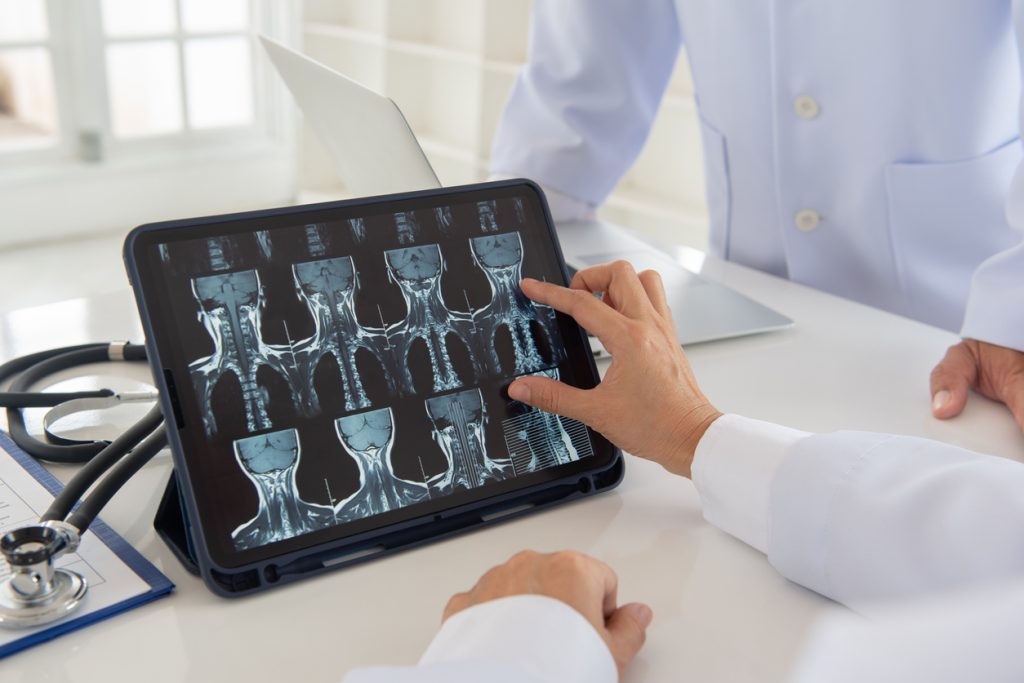Cervical spondylosis describes a common condition that occurs in the neck as part of the aging process. It’s generally referred to as arthritis or spinal osteoarthritis. Normal wear and tear on the bones, cartilage, and spinal discs causes changes that may result in neck pain and stiffness. Approximately 85% of us will develop it by our later years. Some people are bothered by symptoms, and others are not really affected at all. Even when symptoms do occur, non-surgical treatments are often effective.
Causes of spondylosis
As the facet joints and spinal discs in the neck degenerate, the protective cartilage wears away. The discs, which cushion the spine, dry out and shrink. Discs may eventually herniate or bulge. Bone spurs that pinch the spinal cord and nerves may form. The spine may become misaligned. As the spine becomes less flexible, movements will become more difficult and painful. Other risk factors for cervical spondylosis besides age include having a previous neck injury or trauma, occupations that put extra stress on the neck, and genetic predisposition.
Symptoms of cervical spondylosis
In addition to pain and stiffness, a person may experience tingling, numbness, and weakness in the shoulders, arms, and hands. There may be tightness or muscle spasms in the neck and shoulders, along with limited range of motion. Neck and shoulder tenderness can also lead to headaches. Some people may have issues with their balance and coordination.
Diagnosis
A thorough neurological examination will evaluate the patient’s range of motion, flexibility, reflexes, posture, muscle tightness, and areas of tenderness. X-rays can detect bone spurs and loss of disc height. The doctor may order additional tests based on the patient’s symptoms.

Treatment
Conservative non-surgical treatments include over-the-counter or prescription medications for pain and inflammation. Physical therapy, or functional rehabilitation, can help the patient build strength and flexibility while keeping their spine stable. Ultrasound, heat, and ice therapy may help the patient improve or maintain functional abilities associated with daily living.
Surgery is seldom needed to treat cervical spondylosis, and only after more conservative treatments have not been helpful. Surgery is occasionally necessary to treat a bone spur or lamina that is pressing on a nerve or into the spinal canal.
The physicians at Atlanta Brain and Spine Care are experienced in diagnosing and treating the symptoms of cervical spondylosis. Contact us today to schedule an appointment with one of our doctors to discuss your treatment options.


